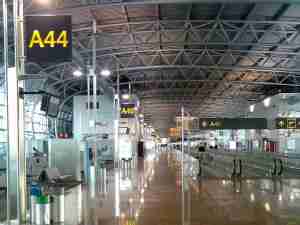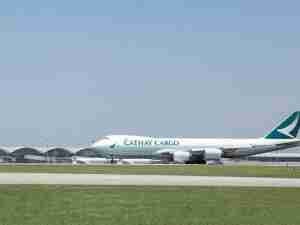Cathay Pacific capacity cuts help it post first-half profit
posted by AJOT | Aug 14 2013 at 02:12 PM | Air Cargo
Cathay Pacific Airways Ltd, the world's largest international air cargo carrier, is scaling back seating capacity on some long-haul routes to offset declines in its air freight business, allowing it to post a first-half net profit.
Cathay, which competes globally against rival carriers like Singapore Airlines Ltd and Korean Air Lines Co Ltd , retired three Boeing 747s in the first six months of this year and replaced them with two smaller, more fuel efficient Boeing 777s, as the company squeezes more income from its North American passenger routes, its biggest market.
Cathay said its net income hit HK$24 million ($3.09 million) for the first six months of the year, compared to a HK$929 million net loss for the same period last year. That loss was its worst performance since the outbreak of Severe Acute Respiratory Syndrome in 2003 curtailed air travel.
In the second half of 2012, Cathay posted a net profit of HK$1.85 billion, but overall saw its net income decline 83 percent for the whole of 2012.
Cathay said in a stock exchange announcement on Wednesday that high fuel prices continued to negatively affect both its passenger and cargo businesses, especially on long-haul routes.
Reducing capacity and retiring less fuel-efficient aircraft helped cut fuel costs by 8.5 percent year-on-year during the first six months, but Cathay also warned continued weakness in cargo demand will continue to negatively affect its business.
Hong Kong's flagship airline was the only one of Asia's top 10 carriers this year to cut available seat kilometers, a measure of passenger capacity. The figure was down 4.8 percent in June compared to a year earlier, according to Thomson Reuters data. Garuda Indonesia Tbk led gains with a jump of 16.5 percent year-on-year in April, the most recent month for which data was available.
Cathay also has been fine-tuning its seating arrangements on U.S. flights to improve passenger yields, a gauge of profitability, according to Geoffrey Cheng, an analyst at securities brokerage BOCOM International.
"They pulled out the economy class and put back the premier economy. They have fewer seats, but revenue from each seat is higher," said Cheng.
In June, Cathay told analysts it had revised its 2013 forecast for available tonne kilometers - a measure of both passenger and cargo capacity - to a year-on-year decrease of 4.3 percent instead of an increase of 2.6 percent, largely because of reduced freighter capacity. However, it maintained its projection for a 1.5 percent contraction in available seat kilometers.
North America passenger traffic dropped 12.5 percent during the first half of the year, even as Cathay's passenger load factor increased by 1.2 percentage points over a year earlier. That is helping to offset a continuing drop in air freight volume. Cathay's cargo traffic declined 1.8 percent for the first six months of the year, following a 5.3 fall last year.
Cathay told the stock exchange on Wednesday that all of its long-haul frequencies canceled as part of 2012's cost reductions will be restored by September. The airline has already restored flights to Los Angles and Toronto and will restore flights to New York by September.
On the cargo side, the airline said it suspended cargo services to Brussels and Stockholm in February, but intends to add Guadalajara to its network in the last quarter of 2013 to provide cargo service between Mexico, Hong Kong and the rest of Asia.
The airline, which is scaling back its cargo fleet, started to retire its older Boeing 747 freighters in 2012, according to Eric Lin, an analyst at UBS Investment Research in Hong Kong. In March, Cathay canceled orders for eight Boeing 777 freighters. The company will take delivery of six more 777s passenger jets later this year. (Reuters)










